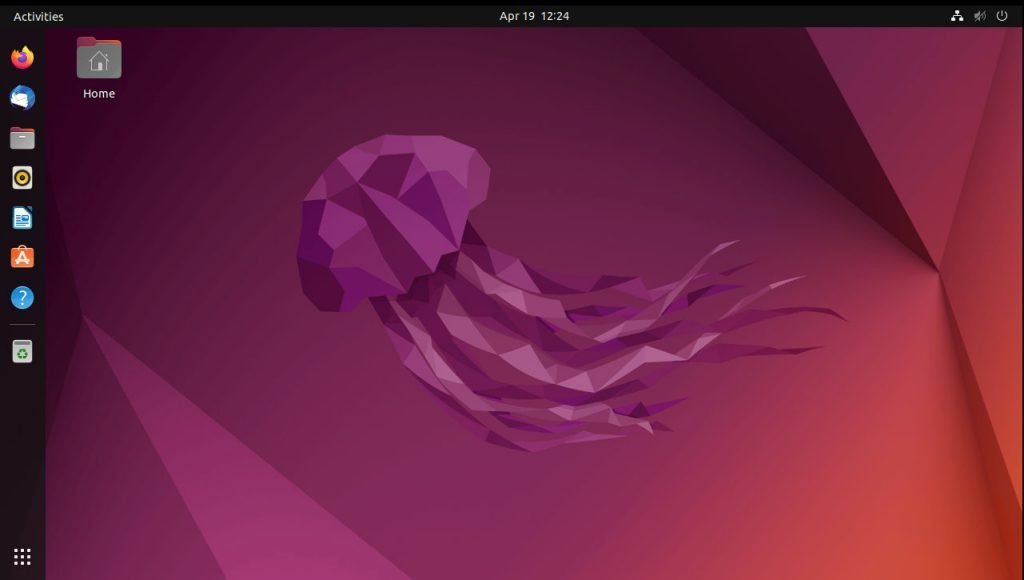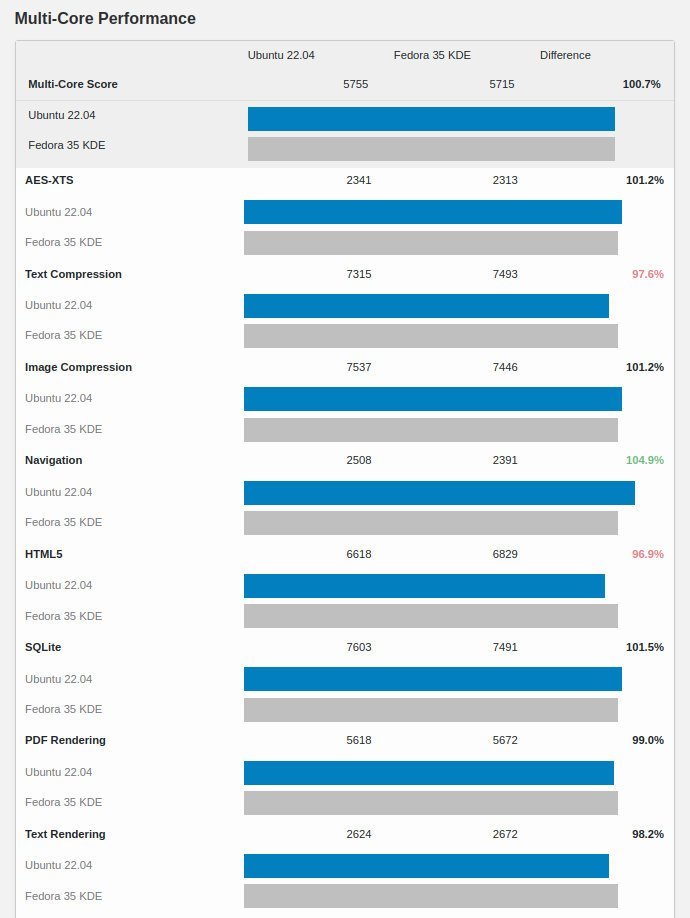We review the recently released Ubuntu 22.04 LTS “Jammy Jellyfish” and benchmark it on its performance. Here’s what we’ve found.
Three months is well enough cooling off time to benchmark an enterprise-grade release from Ubuntu Linux. Ubuntu 22.04 LTS is the 9th release of Ubuntu which is significant in many ways.
GNOME 42, Linux Kernel 5.15 LTS, and new accent colour are some of the visual aspects. This release also brings real-time Kernel support, GNU/Linux core toolchain updates, triple buffering for GNOME desktop and matured Wayland support.
Overall it features cutting-edge desktop tech, alongside some impactful changes for millions of desktop and enterprise users.
Hence, we took a look at how it performs in modern test hardware.
Table of Contents
Ubuntu 22.04 Review and Benchmark
Test Hardware
The following test is performed in a physical system comprising the following spec, which comes with OEM installed WIndows 11:
- Lenovo IdeaPad 5 Pro
- RAM 16 GB
- Processor AMD Ryzen 7 5800u
- Graphics AMD Radeon (aka Renoir)
- NVME SSD
Installation
The ISO file of Ubuntu 22.04 (GNOME) is a little higher – 3.4 GB. Perhaps the highest among the similar level distros. We installed this version in a dual-boot system with Fedora 35 and Windows 11 (OEM).
The Ubiquity installer performed well and kept the GRUB intact, including Windows 11, Fedora and Ubuntu. The installation took around 5 minutes with basic options. On another note, the new Ubuntu installer is still far away.
GNOME Desktop
Post-installation, the default GNOME desktop gets us to the Wayland session. As I mentioned, Ubuntu 22.04 brings the latest and greatest GNOME 42 with GTK4, libadwaita. The entire desktop feels fast and responsive. I could not find any lag or any visual glitches.
Moreover, Wayland in 22.04 feels complete. Using the new GNOME’s screenshot utility, you can easily take screenshots/screencasts. In addition, the desktop default font with the high resolution looks crisp and has no blurriness whatsoever.
Thanks to AMD, the display driver for Radeon graphics are configured automatically.
Furthermore, the touchpad gestures (three-finger & two-finger) in GNOME workspaces are super smooth.
Connectivity, Display, Printer and Wi-Fi
Long-term versions are critical because most systems continue to run for more than five years with the same operating system. Hence, the connectivity of various devices is essential.
Firstly, the Printer setup is a breeze. My HP Deskjet 2300 series installation went just fine. In fact, all I did is to plug in the printer to the USB. And Ubuntu takes care of it, including installation and setting up.
However, in my last review of Manjaro GNOME, the same printer was not installed.
In addition, the Bluetooth connection to the external speaker also went well.
Secondly, the critical aspect is the Wi-Fi in Ubuntu which always is a troublesome chapter. Over the years, Ubuntu struggled with Wi-Fi problems for various reasons. For example, connection drop, not connecting to access point after waking up from standby.
Fortunately, the Wi-Fi worked flawlessly in Ubuntu 22.04 LTS. The search and connect in the GNOME settings do not give any trouble.
Furthermore, another trouble situation is the Laptop brightness problem in Ubuntu which has a long history. And that’s also worked well out-of-the-box without any grub tweaks.
Desktop Performance
Ubuntu 22.04 performance is satisfactory in this test device. In an idle state with an uptime of 40 minutes, it consumes 1.40 GB of RAM, and the CPU is 4% to 5% on average. The gnome shell consumes most of the resources, followed by several desktop services such as seahorse, gvfs.
On the heavy workload state (with browser, calculator, text editor, media player, LibreOffice, file manager), it consumes a little higher resources, i.e. 2.2 GB of RAM, and the CPU is also slightly more elevated. It’s kind of a strange optimization where there is not much significant difference between idle and heavy usage state.
Snap Performance
One controversial decision that Ubuntu 22.04 took was to feature Firefox as Snap. During our test, the Firefox Snap took 15 seconds to open for the first time in an idle state. It is a considerable time in a system with Ryzen 7 and 16 GB RAM. The general opinion of Snap is its slowness.
When we opened it the second time in a gap of 2 minutes, Firefox Snap took 4 seconds. Furthermore, when we opened it after half an hour, it took around 10 seconds to open.
| Start-up case | Start-up time of Firefox |
| First time | 15 sec |
| Within 2 minutes of the previous start-up | 2 sec |
| After 30 minutes of the last start-up | 10 sec |
You must have heard that Ubuntu is already working on several Snap optimizations in upcoming Ubuntu releases.
Feedback from Community
Since the release in April, many users reported several issues. A quick look at the AskUbuntu forum with the tag “22.04” reveals around 300+ topics as of writing this review. That’s about 100 topics for this release per month. In addition, the top tagged issues are related to GNOME, Firefox, Snap and Upgrade – which is quite obvious.
Other than that, recently users reported that Ubuntu 22.04 is pre-maturely killing processes and applications suddenly due to systemd-oomd.service settings. The OOMD is a new feature that kills processes when your system goes into out-of-memory situations. Now, this feature is good, but I believe users needed a little more heads up before the release.

Benchmark Against Fedora 35
Finally, we made a performance comparison to benchmark (via Geekbench) Ubuntu 22.04 LTS against Fedora 35 in the same hardware. They performed almost similar way. But Ubuntu 22.04 LTS performed better in high CPU-intensive work such as structure detection in videos, N-body physics computations, etc.
Here is the detailed benchmark data:
You can view the above benchmark data in detail on this page.
Closing Notes
While wrapping up the Ubuntu 22.04 LTS review, I can say this version worked perfectly as “out-of-the-box”. In fact, it performed well in terms of hardware detection, drivers and other critical areas in a commercial device with Windows 11 pre-installed.
We can comfortably say, Ubuntu or Linux Desktop, in that matter, matured enough to be adopted by millions to replace Windows.
I hope, Canonical thinks about some strange decisions like Snap and OOM more practically in the future. Finally, if you ignore the Snap situation, it’s perhaps the perfect Linux desktop today.
So, what is your experience so far with Ubuntu 22.04 LTS? Let me know in the comments below.





